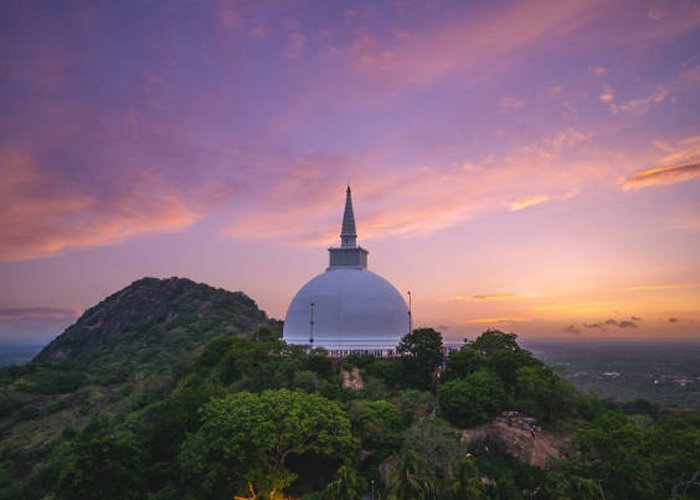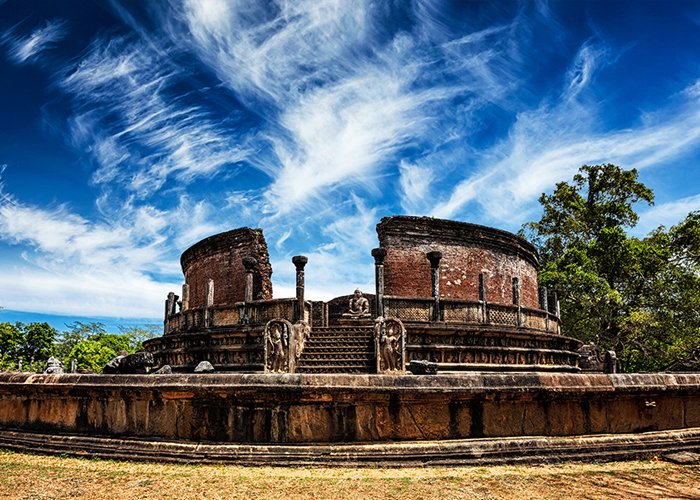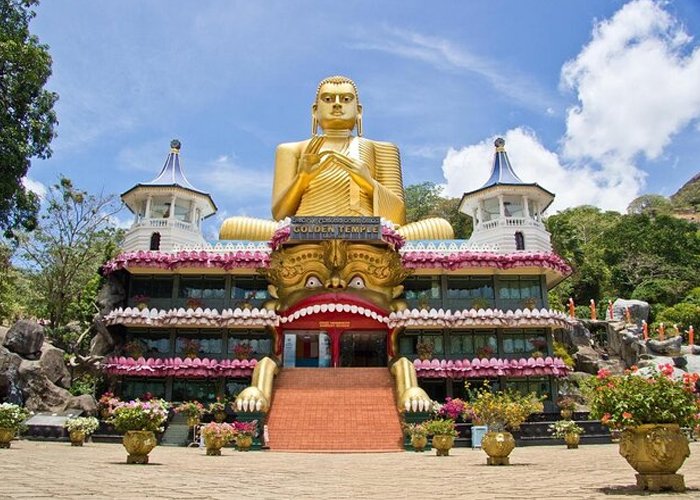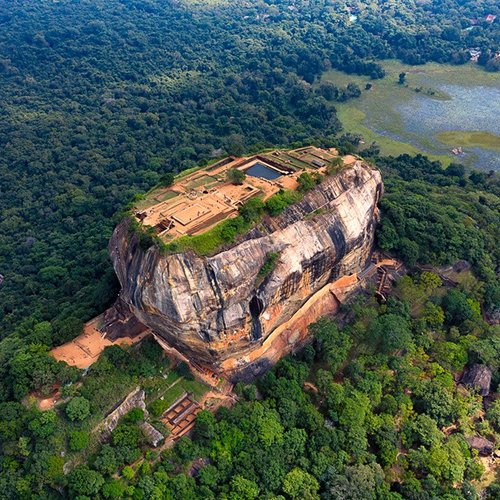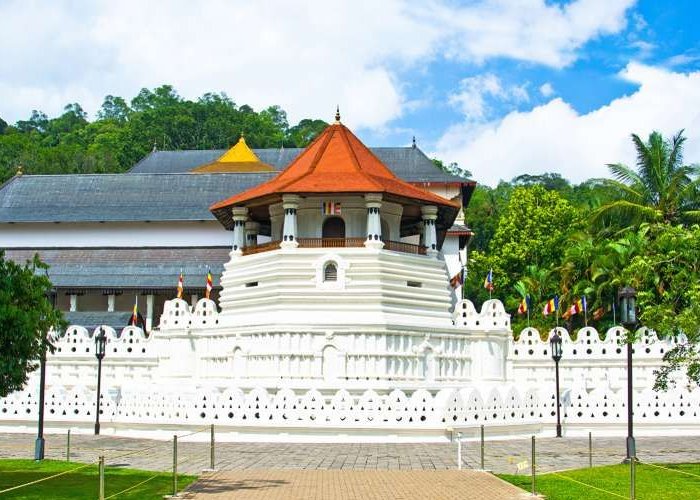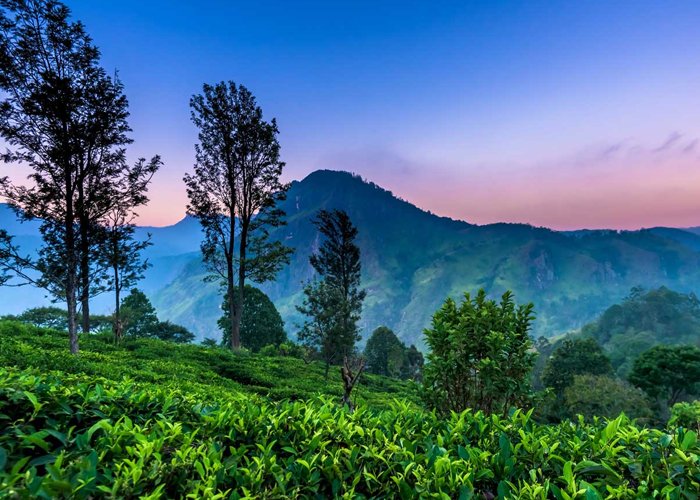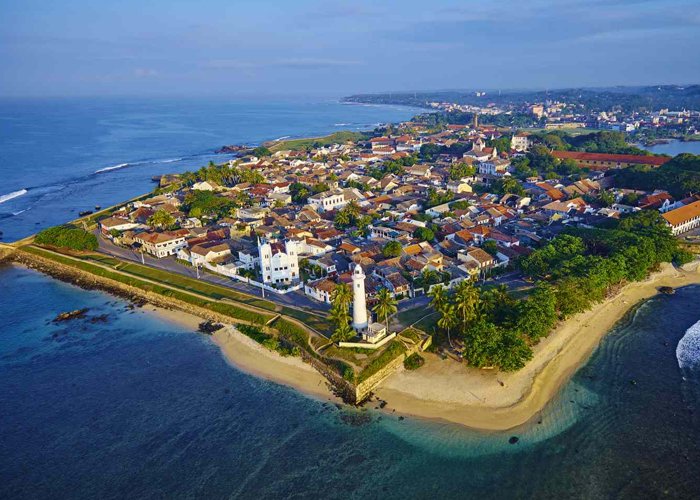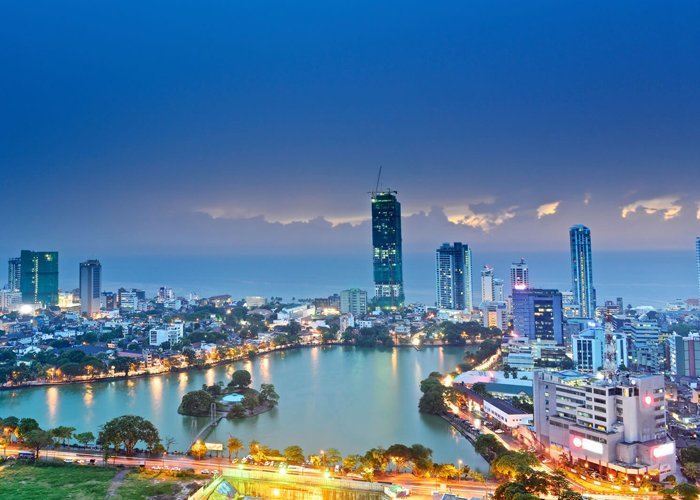Tourists Sites
- Home
- Tourists Sites
Tourists Sites
Anuradhapura is a sacred city popular among Buddhist tourists that were once the ancient capital of Sri Lanka. Anuradhapura is now majorly in ruins but the ruins of the ancient city still bring in an amazing picture of ancient Sri Lanka civilization among travelers. The city of Anuradhapura is a UNESCO World Heritage Site that lies 205km north of the capital city, Colombo. The ancient city of Anuradhapura is considered sacred to the Buddhist world and is frequented by religious tourists to visit many ancient Buddhist monuments. Travelers can visit some of the most famous as well as the tallest Dagobas of Sri Lanka, remains from places, temples, monasteries, ceremonial baths, and the temple of the holy Bodhi- tree in Anuradhapura.
Polonnaruwa located at a distance of 216km from Colombo was the capital of Sri Lanka in medieval times. One of Sri Lanka’s finest ancient kingdoms and another of its eight World Heritage Sites. The 10th-century ruins of temples and palaces are from when Chola kings of southern India conquered nearby Anuradhapura. During this time the city was fortified with three concentric walls, beautified with parks and gardens, and sanctified by many a shrine and sacred place. The city and the surrounding area were watered by a unique irrigational complex known as “Parakrama Samudra).
The Buddhist temple complex of Dambulla consists of five cave temples carved under a very large overhanging rock. The temples were carved out over several centuries, but the oldest dates back to the 1st-century B.C.E. The temples include numerous carved statues of Buddha, and his faithful disciple Ananda, as well as Hindu deities.
The largest of the caves is known as the Maharaja Vihara Lena, or Cave of the Great Kings, so named because the cave contains the statues of two ancient, great Sri Lankan kings—Valagambahu and Nissankamalla. Fifty or so Buddha statues, including a life-sized granite one, are all contained inside the temple as is a small stupa surrounded by eleven seated Buddhas.
The cave walls and ceiling are entirely painted with paintings depicting early Buddhist historical events and murals with traditional Buddhist designs. Like all the other cave temples, this one is dimly lit, preserving the vibrant colors of the paintings and murals.
Another unusual feature of this particular cave temple is the large metal bowl that was placed inside the cave centuries ago, presumably to catch rain dripping from the cave roof. It’s said that even in a severe drought, the water in the bowl does not dry up.
Dambulla is one of the UNESCO World Heritage sites located in the region known as Sri Lanka’s Cultural Triangle. If you ever go to Sri Lanka, you must go to Dambulla. It is a very unique and spectacular site!
Sigiriya Rock Fortress is in the heart of Sri Lanka’s Cultural Triangle. This magnificent fortress was built by King Kashyapa on top of the Sigiriya Rock. The ancient king made this rock fortress his royal dwelling and he made sure to install security measures and traps against invaders as he lived in fear of getting dethroned by his brother, Mugalan, who happened to be the rightful heir. Sigiriya Rock Fortress is popular for its amazing architecture and the skill and genius that went into building it. As it was the residence of the king, there are many entertainment units as well. The Sigiriya Maidens paintings are widely talked about and praised. It is believed that the massive mural once must have held paintings of around 500 maidens, although only twenty-one paintings have survived to this day. The maidens are painted from the waist up with naked torsos. The torsos meet paintings of clouds, giving way to speculation that these paintings are of goddesses. However, some believe that these maidens were King Kashyapa’s ladies.
The Mirror Wall is another highlight when you’re visiting the fortress. The wall is said to be polished so smoothly and thoroughly back in the day so that the king could examine his reflection, hence the name Mirror Wall. In the present day, the wall is filled with poems and inscriptions by visitors. However, inscribing is not allowed currently so as to be able to preserve it.
The climb up the Sigiriya Rock is filled with excitement and breathtaking views surrounding you on your way. You will get to witness water gardens with bathing pools and tanks. The gardens are simply mesmerizing and are among the oldest landscaped gardens in the world. Once you get to the summit, be cautious as the winds can be pretty strong. The views from the top are simply spectacular and make the whole climb even more worthwhile.
The Dalada Maligawa, also known as, the Temple of the Tooth, is one of the landmark sites in the city of Kandy. It is located in the heart of Kandy town surrounded by the lake and the commercial district. The Maligawa was once the royal palace inhabited by the king and his consorts, but after the demise of the Kandyan Kingdom, the palace was transformed into a Buddhist temple that holds Buddha’s tooth.
It is a must-visit location for all tourists. Visitors can catch a glimpse of Buddhist rituals, explore the museum that includes several ancient artifacts, and pay your tribute to the tooth relic at one of the Buddhist ceremonies held at the premises. The architectural splendor and the historical importance of the Dalada Maligawa are sure to amaze you. Points of interest are the Aluth Maligawa, Audience Hall, and the World Buddhism Museum.
Before preparing for your visit keep in mind that Maligawa is a Buddhist shrine and you will need to wear attire that covers your shoulders and legs.
Nuwara-Eliya is a small city located in the center of mountain tea plantations at 1884 meters above sea level, it is a resort with a comfortable climate and fresh mountain air. This city is also called “Little England” due to its buildings in British colonial style surrounded by gardens with English lawns. High above the coastal plains of Sri Lanka, mountain clouds rest upon a blanket of tea plantations. It was in these very highlands where the colonial British retreated for cooler climes and built empires from hill stations that became their adopted home. A timeless favorite has always been the city of Nuwara Eliya – a city so nostalgic.
A Unesco World Heritage Site, this historic city is a delight to explore on foot, an endlessly exotic old trading port blessed with imposing Dutch-colonial buildings, ancient mosques and churches, grand mansions, and museums. Wandering its rambling lanes you’ll pass stylish cafes, quirky boutiques, and impeccably restored hotels owned by local and foreign artists, writers, photographers, and designers.
Built by the Dutch, beginning in 1663, Galle’s core is the Fort, a walled enclave surrounded on three sides by the ocean. A key part of the Fort’s appeal is that it isn’t just a pretty place. Sure, tourism now dominates the local economy, but this unique city remains a working community: there are administrative offices and courts, export companies, schools, and colleges.
This buzzing city used to be the country’s capital city, is now one of the cleanest cities in Sri Lanka. Check out the crystal white Race Course – that used to be the horse racing hub in 1893 but is now furnished with the latest clothes boutiques, restaurants, and tea shops. You could even travel to Pettah and witness the famous ‘floating market’ for a new kind of shopping experience, or the famous Colombo Port City which is an offshore city featuring parks, commercial complexes, and even an F1 track. If you head towards Bauddhaloka Mawatha, you would come across the “Arcade”. This building features the best designer-branded shopping boutiques, souvenir shops, restaurants, and coffee shops. One of its unique aspects is the ‘walk-over fish tank’ that has made this spot one of the trendiest and coolest hangout spots in Colombo.

